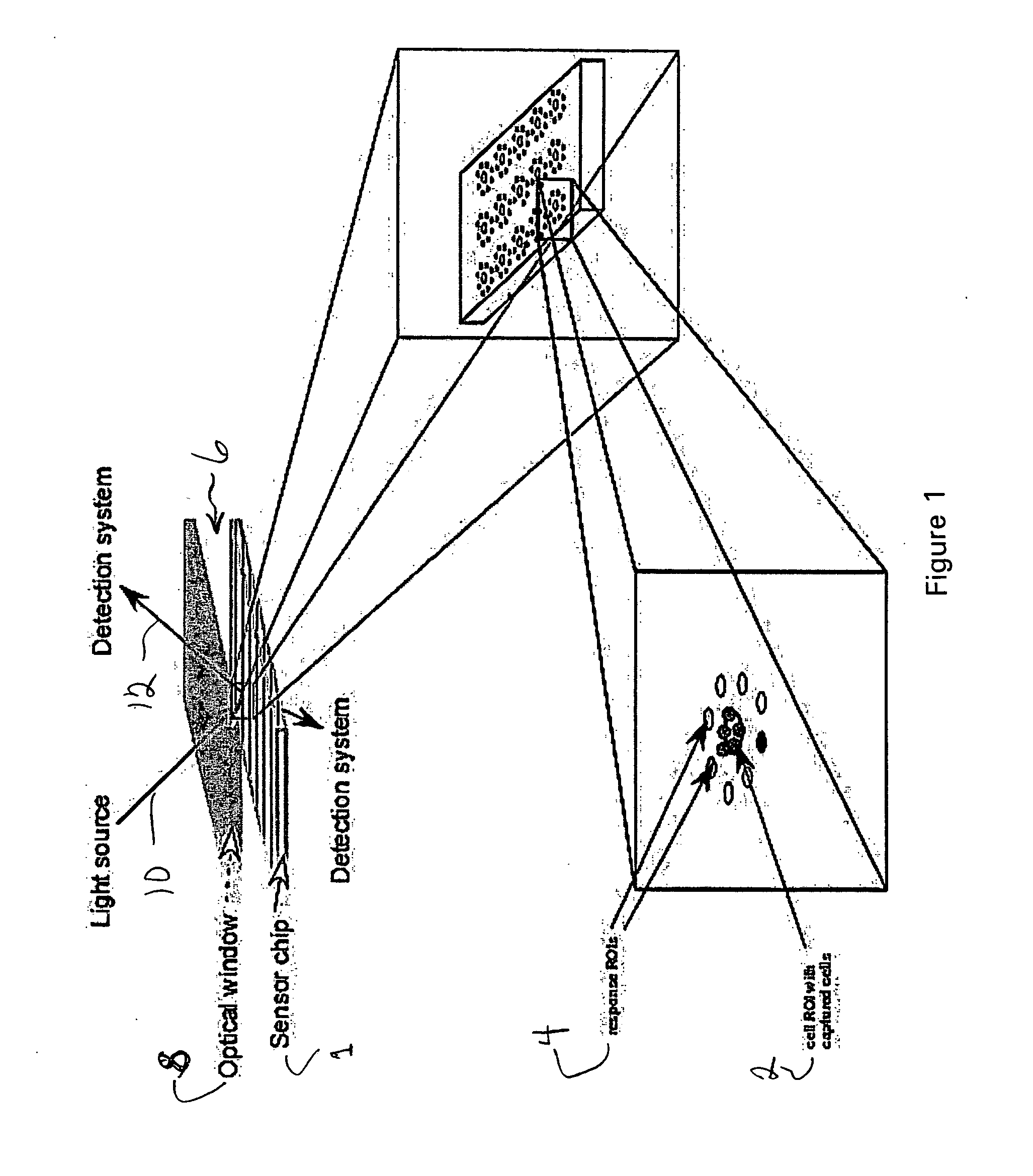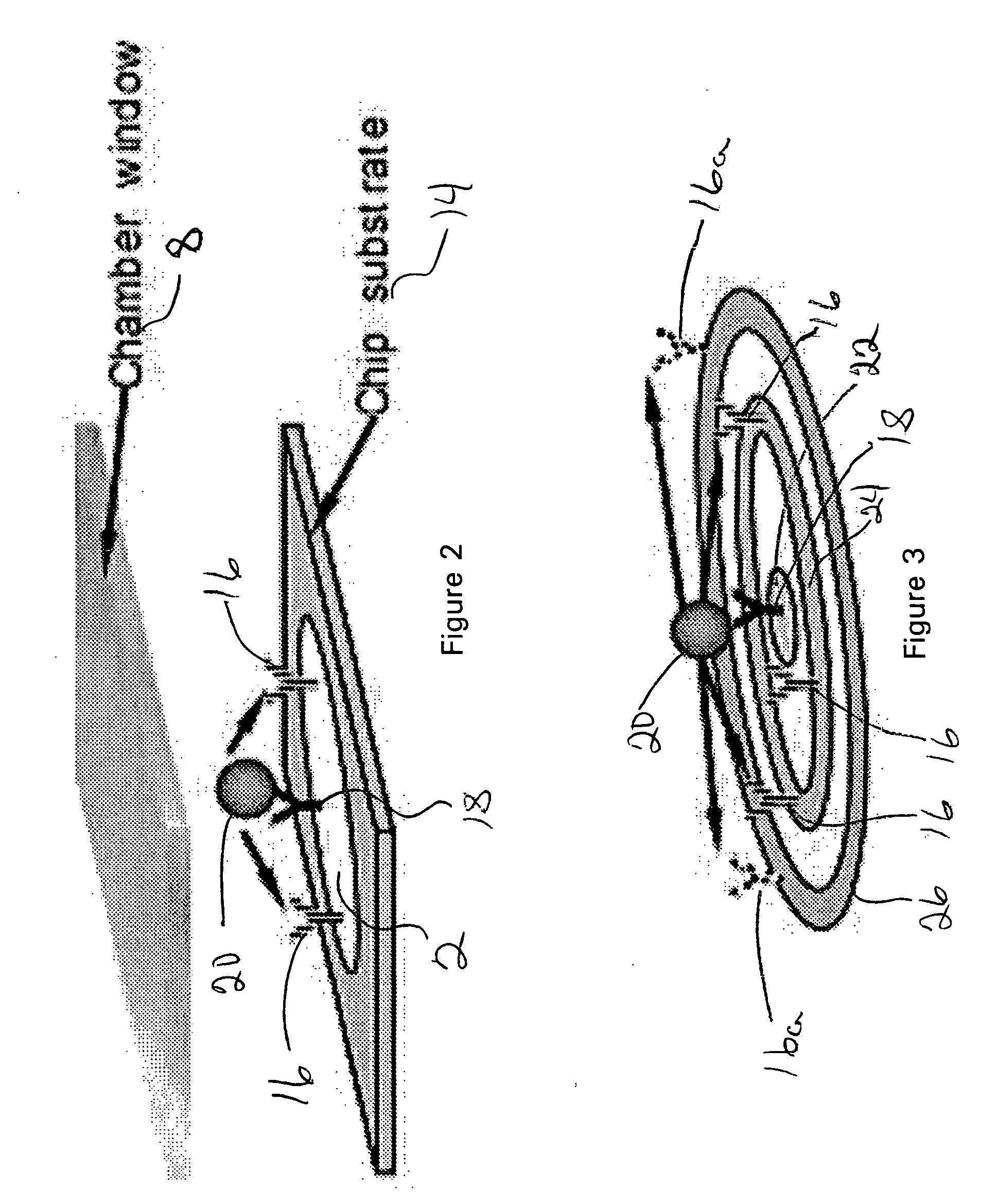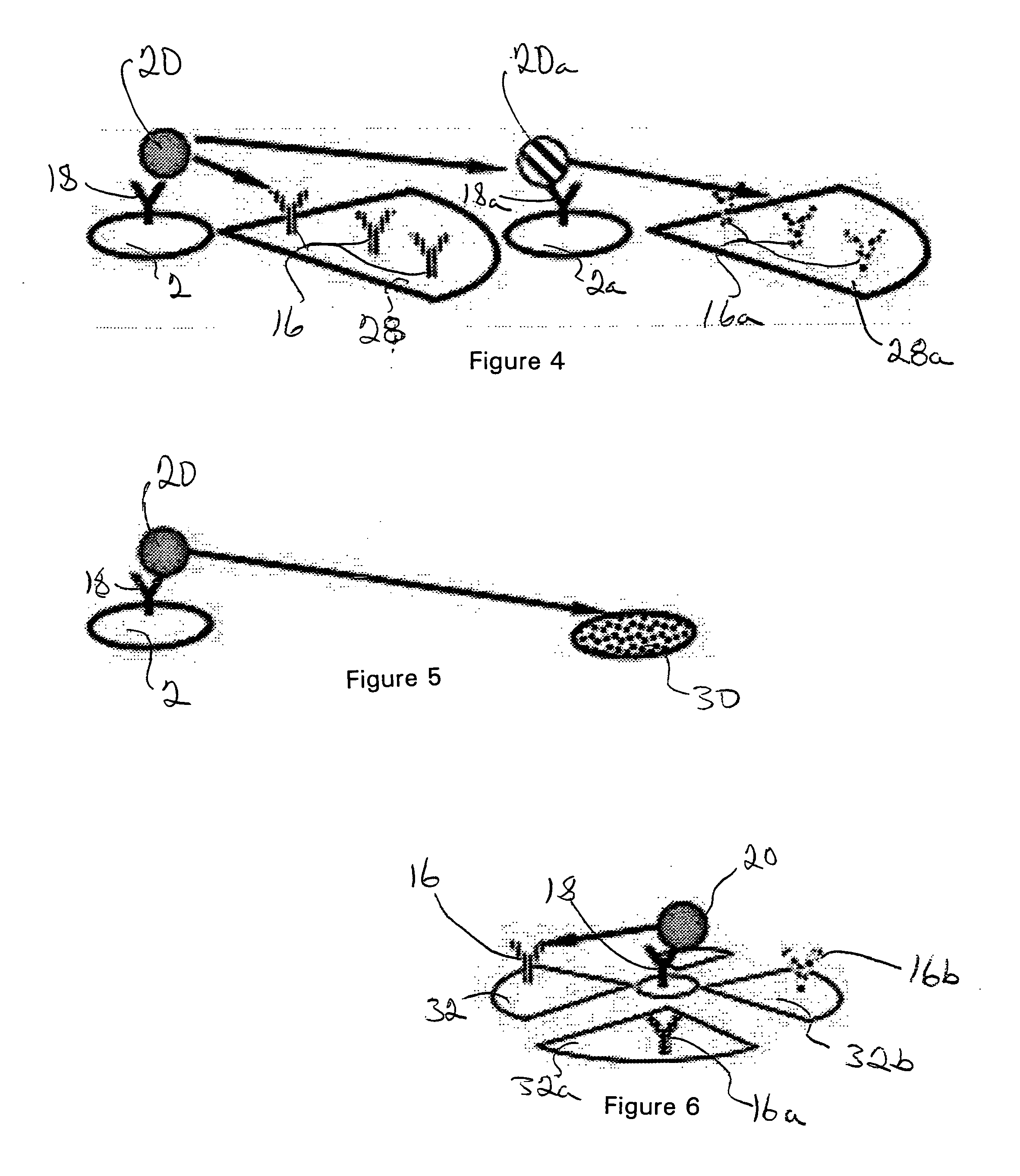Cytometer on a chip
a chip and cytometer technology, applied in the field of cytometers, can solve the problems of complex experimental protocols that may be difficult to implement, complex compensation, and limited application of flow cytometry, and achieve the effect of high multiplexing and label-free manner and high parallel detection
- Summary
- Abstract
- Description
- Claims
- Application Information
AI Technical Summary
Benefits of technology
Problems solved by technology
Method used
Image
Examples
Embodiment Construction
[0023] The following examples are given to illustrate various embodiments and aspects of the invention and are not intended to limit the claims in any manner whatsoever.
[0024]FIG. 1 illustrates an apparatus for measuring cell phenotype and cellular responses including a biosensor chip 1 onto which the cell ROIs 2 and the Response ROIs 4 are deposited in predetermined spatial patterns. A flow cell 6 that contains the biosensor chip 1, brings a sample into contact with the biosensor surface, provides a chamber for incubating cells during the course of an experiment, and provides a window 8 for optical interrogation. An optical detection system provides an illumination beam 10 and detects the reflected light 12 from the chip to measure the binding of cells and bioproducts to their cognate ROIs. One method of optical interrogation of analyte (cell or bioproduct) binding to the chip is based on the phenomenon of surface plasmon resonance (SPR). An SPR chip typically includes a reflectio...
PUM
 Login to View More
Login to View More Abstract
Description
Claims
Application Information
 Login to View More
Login to View More - R&D
- Intellectual Property
- Life Sciences
- Materials
- Tech Scout
- Unparalleled Data Quality
- Higher Quality Content
- 60% Fewer Hallucinations
Browse by: Latest US Patents, China's latest patents, Technical Efficacy Thesaurus, Application Domain, Technology Topic, Popular Technical Reports.
© 2025 PatSnap. All rights reserved.Legal|Privacy policy|Modern Slavery Act Transparency Statement|Sitemap|About US| Contact US: help@patsnap.com



